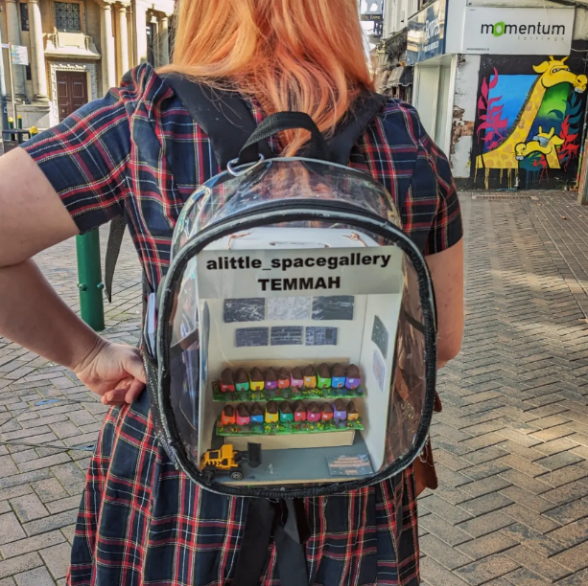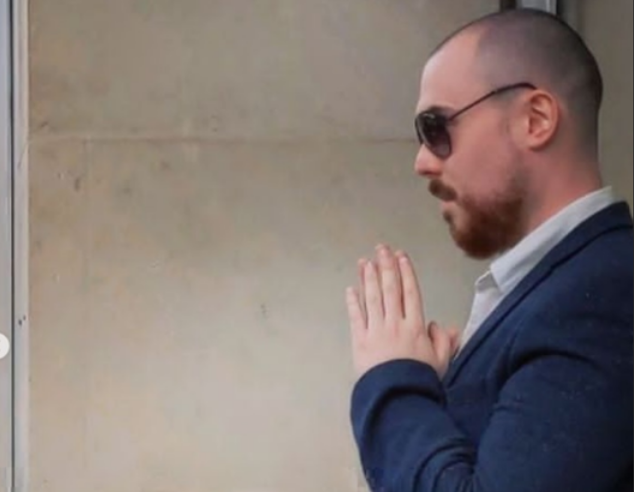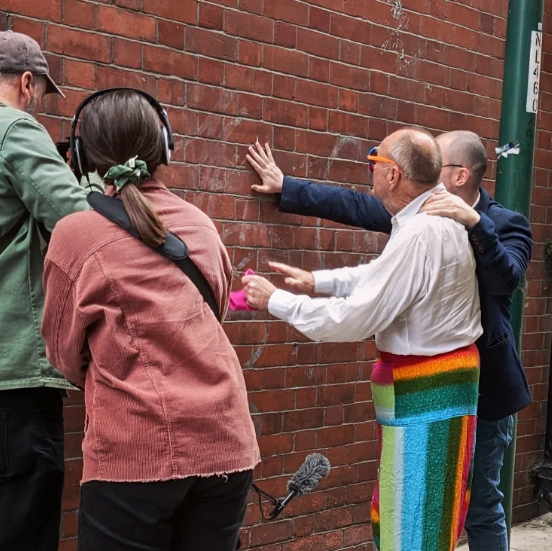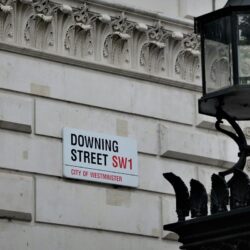Taking Our Work to the Street
This is the final blog in this three-part account of a project which took voices gathered through spatially-led video interviews in spring 2022, and developed them into public street theatre with performers and artists.
In this piece I had hoped to recall poignant responses to dramatic interventions created by performers from Tin Shed Theatre. Unfortunately, the Queen’s death on September 8, 2022, meant that a certain mood would dominate our lives for 10 days. The event planned for the day before her funeral could not happen. This blog explains how we used the time to step back, reflect and use the streets to take our work in a slightly different direction. Instead of a guided walk, we worked with three artists over one weekend to create pieces that can be used in the future. Members of the public still feature in what we did and we captured the experience on film.
An opening emerges from a setback
The whole world stopped to think after the Queen’s death. There was a kind of national atmosphere, according to Angharad Closs Stephens. Historian Peter Hennessey explained on BBC Radio that this linked to an atmosphere which had lasted seven decades: the political consensus of post-war Britain. Important elements of the latter are explained in a 20-minute film. The 1947-1951 Labour government’s mission to rebuild Britain after World War II was largely followed by the 1951-1964 Conservative government. The early years of Elizabeth II’s reign therefore further developed a welfare state and — crucially for my project — carried on renewing the urban fabric of Britain. To build a picture of this mood I outline three dramatic pieces, which explore interventions from the 1960s and 1970s which people felt would make lives better. Throughout there are interesting parallels to contemporary crises. I start with the artist Temmah carrying the Little Space Gallery on her back.
- Little Space Mobile Gallery

The walls of Temmah’s backpack-sized art space (see image above) display three press cuttings from April 1969 and maps of Newport as the streetscape changed. On the lower shelves is a collection of brightly-painted houses – designed and made by artist Ty Dolbel to represent homes demolished to make way for the shopping center. A yellow digger is placed symbolically on the floor; moving back and forward as Temmah’s body turns to invite people to peer into her little space. For people who consented, discussions between the public and Temmah were filmed by Aled and Branwen from Ffilm Bach & Mawr (Welsh words meaning ‘films small and big’). For example, girls working in a small shop were surprised to hear that houses used to exist on Union Street, now beneath the shopping center car park.
We then walked through to the site of the former housing. As few people were about, Temmah decided to investigate a South Wales Argus pasted up in the galley. The headline from 15 April 1969 told us that another ‘all-male tradition’ had gone as the president of Newport’s Chamber of Trade was to be a woman.
The film team recorded a conversation between Temmah and I as they pondered this story and a cutting from the following day. On April 16, 1969, the newly-elected Mabel Johnson shared her perspective on the town. She was worried that so many units in the new shopping center were empty. In many ways, this echoed the state of Newport in 2022. The landlord of a pub had told us earlier on in the walk that Newport’s smaller traders were exposed by increasing energy costs.
The film from Temmah’s walk gives a good impression of how rich discussions develop from a small prompt like the newspaper or the houses and digger. As such, there is excellent potential to use this technique on a public walk with people choosing an item from inside the gallery. I now move to a piece developed by Matt Reed from my research interviews and other materials.
- Selling the future
A slick property developer from out of town seemingly spoke as if he was still in the 1960s. He guided us towards the future of shopping centers, motorways, and bridges from a location (see image below) on Corn Street. Behind him is the 15-story Chartist Tower, built in 1967 and recently renewed as the 135-bed Mercure Hotel.
Just over the road, we met a local woman born in the late 1920s and her daughter. They agreed to an audio interview. The mother responded with stories from different streets in Newport but admitted that she couldn’t remember all the details. I reassured her that it was also healthy to also live in the present. As the conversation ended, it was poignant that her daughter mentioned the times of prosperity in Newport when was a teenager in the late 1960s. Though present times were hard, she still hoped that ‘somebody had a secret plan.’ This brief conversation helped to reassure me of our approach: firstly, that people are keen to stop and talk; secondly, that time is complicated for all of us as memories merge no matter what age; and thirdly, that the fortunes of people and place go through ups and downs.

In the third example we met Bob Pontin, who was born in the early 1940s and is a long-standing Newport resident. Bob wanted to use a clowning approach, wearing a red nose and colorful clothing, to explore the politics and history of an alleyway in Newport. Bob’s ideas started to develop in July and he was helped by Matt, producer Angharad Evans, and director Samantha Alice Jones. In particular, this performative piece was designed to create an intimate experience.
- Developing an immersive outdoor performance
The 50-metre length of the narrow pedestrianized Friars Street acted as a portal to take us back and forward in time. For excellent examples of portals in films and literature, see Mark Fisher’s The Weird and the Eerie. Bob chose this place as it links the Victorian-era Commercial Street through to a large area cleared in the 1960s and 1970s to build a shopping center — erasing warehouses, a bus station, a cinema, a pub, a fire station and other buildings. After a playful fight to gain access, Matt guided Bob to touch the shiny red bricks (see image below). Matt and Bob improvised as they went along and members of the public stopped to look at what they were doing. In a guided public event we would invite people to touch and feel the texture of the buildings and give their own perspectives.

As the end of this short walk, Bob discovered that the current shopping center has many empty units. The evidence echoes the concerns raised by Mabel Johnson in 1969. The filmed account introduces the two character, has shots from different angles and gives a provocation for people to think about public and private spaces.
Reflections
These examples help to conclude this blog series about taking biographical interviews and weaving them together into a publicly-accessible form — in this case street theatre. Throughout these blogs, I have been reminded that the fabric of places, whether touched as Bob did or experienced through online mapping systems, open us to emotions and memories. In particular, we explored how Newport as an example of a place that embraced the post-war mood of renewal. The big concrete buildings capture the 1960s and 1970s and remind us of what people wanted for the future, and the newly-opened Mercure Hotel also show us that there is potential to reinvent buildings and places.
Although it was disappointing not to have run the public walking tour in September, artists Temmah and Matt still met plenty of people. We have generated many hours of quality film footage and audio recordings. This now acts as a resource to stage a new events and reflect on our process and the lessons that we learned. Moreover, there are opportunities to cut up the digital materials as still images, produce short or long films and produce audio outputs. In the coming months I will place some of the original interview materials – as films – on https://reshare.ukdataservice.ac.uk/.
I would like to thank people who shared their stories, staff at Newport Reference Library, and the Tin Shed Theatre team who stretched their minds and bodies to develop this material. As my ESRC-funded Postdoctoral Research Fellowship ends, I would also like to show my appreciation for the financial support which has made this public theatre commission and film project possible. Finally, I could not have done this project without ethical approval from Swansea University, nor the support of Dr Angharad Closs Stephens and my colleagues in the Geography Department.



























































































